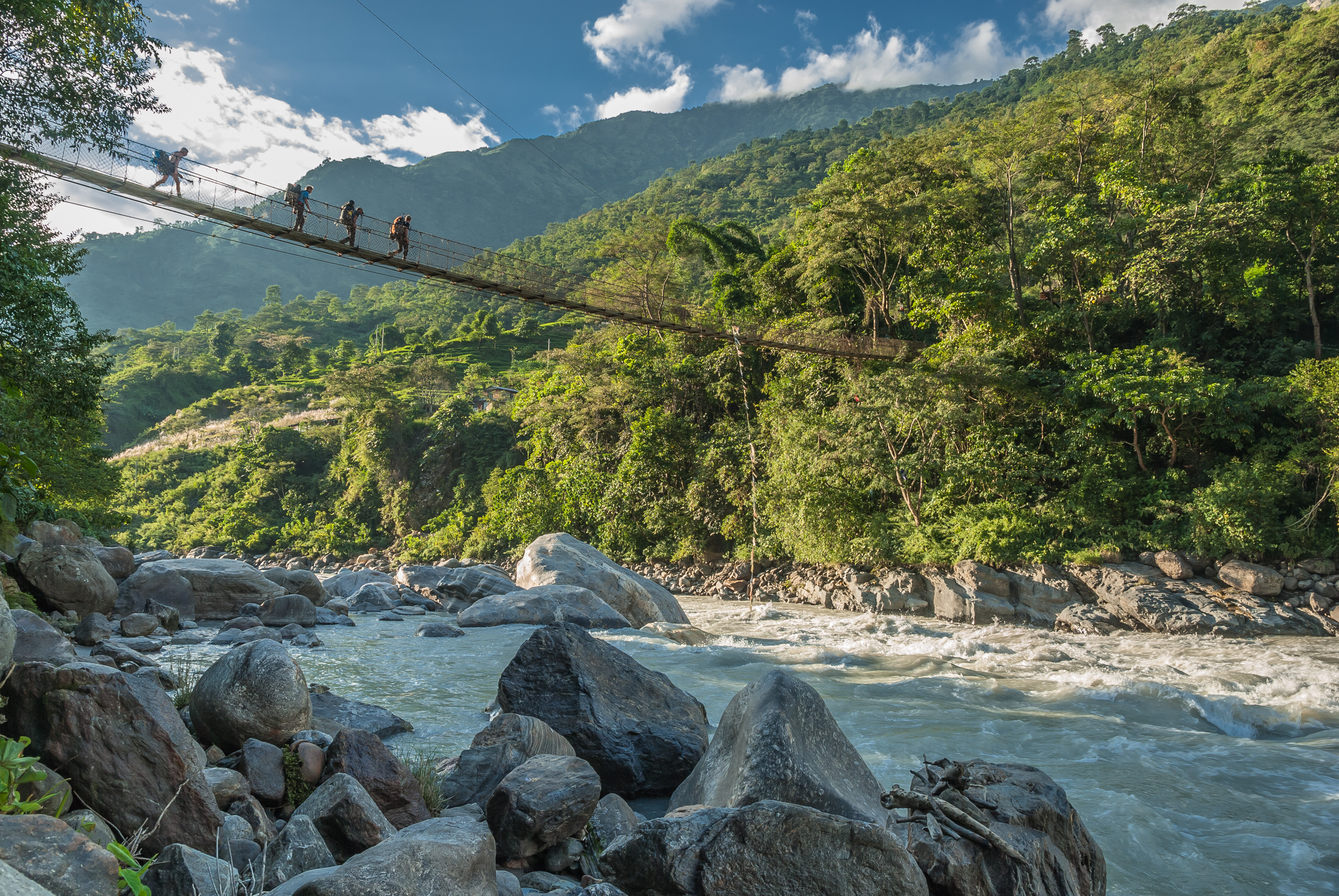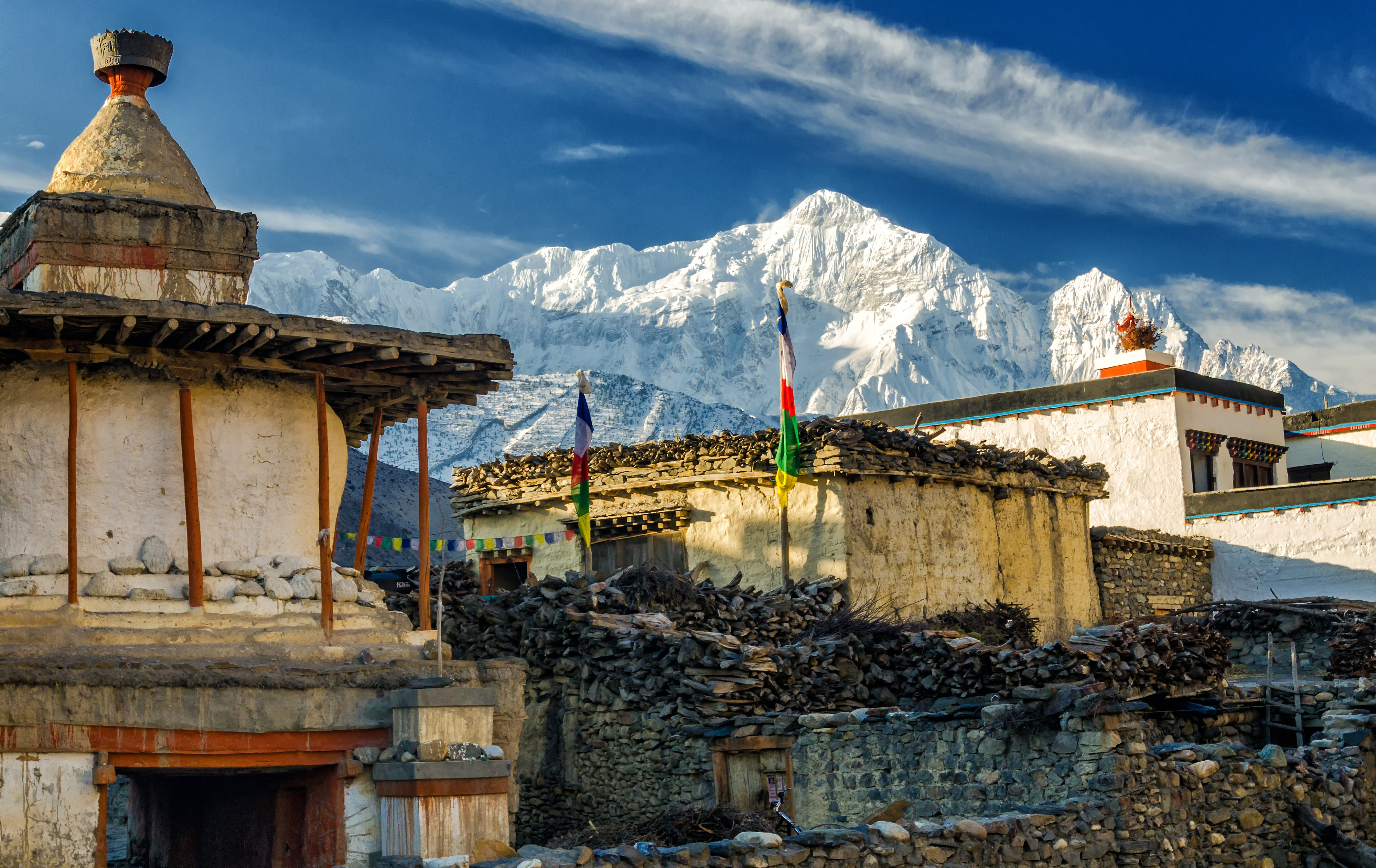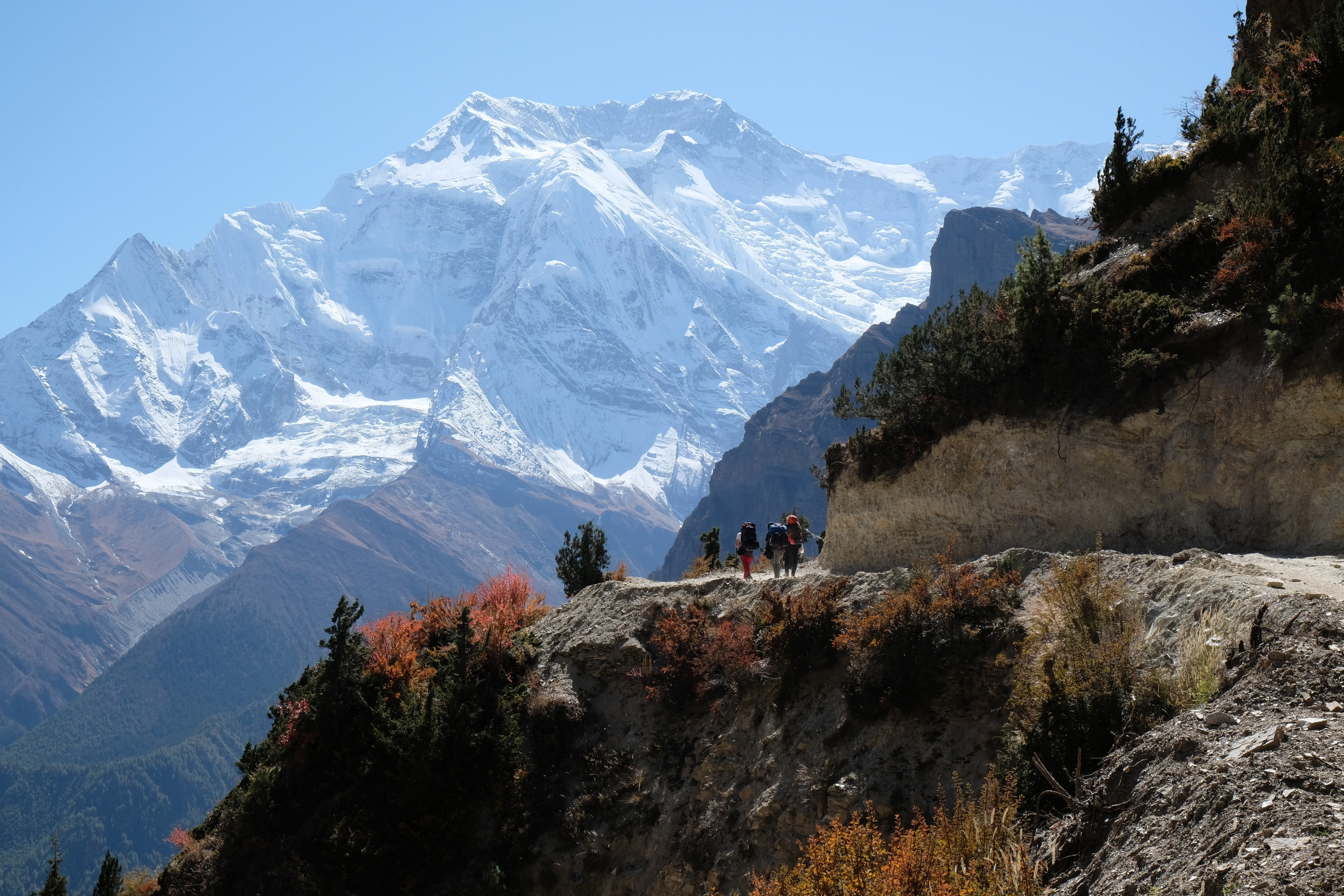Exploring the Annapurna Circuit: A Journey Through Nepal's Enchanting Landscapes
When you think of Nepal, what comes to mind? For many, it's the towering mountains, sheer cliffs, and the legendary Sherpas. However, this enchanting country offers so much more. Imagine trekking the Annapurna Circuit, where you journey through dense jungles and climb to expansive rice fields high among the clouds. One moment you're navigating lush undergrowth, and the next, you're crossing snow-capped peaks.
This iconic trek around the Annapurna mountain range, named after the Hindu goddess of food and nourishment, offers an extraordinary adventure through diverse landscapes. It’s a journey that feeds the soul and rejuvenates the mind. As you trek from one village to another, you'll find yourself shedding the stresses of everyday life. Reaching the highest point at Thorong La Pass, you'll descend with a renewed sense of clarity and peace.
The Annapurna Circuit is one of the best treks in the world. Its unique combination of natural beauty, cultural richness, and personal challenge makes it an unforgettable experience.

What is Annapurna?
The Annapurna Massif is named after Annapurna, the Hindu goddess of food and nourishment, believed to be the daughter of Himavat, the king of the mountains. This association is the reason for the massif’s name.
The name "Annapurna" is significant. In Hindu mythology, Annapurna (one word) is a goddess and also denotes a stunning mountain range in Nepal. In contrast, "Anna Purna" (two words) might refer to a manager at a financial firm or an avid marathon runner. Therefore, it is Annapurna—one word.
The Annapurna Massif includes one peak over 8,000 meters, the 8,091-meter Annapurna I. Additionally, it features 13 peaks over 7,000 meters and 16 peaks over 6,000 meters, making it a collection of exceptionally tall mountains.
The massif spans 55 kilometers and is bordered on the west by the Kali Gandaki Gorge, the deepest gorge in the world, which separates Annapurna from Dhaulagiri, the seventh-highest mountain globally. The Marshyangdi River borders the massif on the north and east, while the Pokhara Valley lies to the south.
This region is not only a climber’s paradise but also holds significant cultural and geographical importance, attracting adventurers and pilgrims alike. The Annapurna Conservation Area, established to protect the region's biodiversity, is a popular trekking destination, known for its breathtaking landscapes and diverse ecosystems.
Cultural Significance of the Route
For centuries, the Nepali people have traveled this loop, connecting with the land, visiting relatives, and making pilgrimages to sacred ceremonial sites. Among these sites, Muktinath stands out as one of the most significant. It is a sacred place for both Hindus and Buddhists, holding deep religious importance. For Hindu Vaishnavas, Muktinath is one of the eight most sacred shrines, housing one of the oldest temples dedicated to Vishnu. This site not only embodies the spiritual heritage of Nepal but also serves as a testament to the country's religious diversity and the intertwining of Hinduism and Buddhism in its cultural fabric.
Additionally, the route itself is a living history of the Nepali people's relationship with their environment and each other. It is a journey that reflects centuries of tradition, faith, and communal bonding, offering modern travelers a unique glimpse into the rich cultural tapestry of Nepal. From the ancient rituals performed at various points along the way to the stories passed down through generations, this route is much more than a physical path; it is a journey through the heart and soul of Nepali culture.

Annapurna Circuit Trek Details
Distance: 130 km (80 miles)
Days Required: 10-13 days
Total Incline: 8,000 meters
Total Decline: 7,000 meters
Highest Points: Tilicho Lake (4,919m) and Thorong La Pass (5,416m)
What makes Annapurna so Dangerous
Annapurna I, the tenth highest mountain in the world, holds a notable place in mountaineering history. In 1950, French mountaineer Maurice Herzog and his team made the first successful summit of a peak over 8,000 meters. However, Annapurna I is also infamous for its high fatality rate, the highest among all 14 eight-thousander mountains. With 34 deaths per 100 safe returns, it poses significant risks, which is why most adventurers choose to trek around it rather than climb it.
The Annapurna Circuit is the most popular trekking route around the Annapurna massif, attracting many hikers each year. Other noteworthy routes include the shorter Jomsom trek, which is part of the Annapurna Circuit, and the Annapurna Sanctuary route leading to a high glacial basin known as Annapurna Base Camp (ABC). ABC serves as a base for climbers aiming for the peaks of the massif and is also a popular side-trek for those on the main circuit seeking to maximize their mountain experience. Alternatively, ABC is often the focal point of a challenging multi-day trek.
The popularity of the Annapurna Circuit has led to increasing crowds, especially during peak trekking seasons. Approximately two-thirds of all trekkers in Nepal visit the Annapurna region. Lukla Airport, another major hub for trekking in Nepal, serves as the gateway to the renowned Everest region.
How challenging is the Annapurna Circuit Trek?
Determining the difficulty of the Annapurna Circuit Trek depends on several factors, including your fitness level, mental preparation, route selection, and experience. The trek's complexity is not a one-size-fits-all scenario.
Recent developments, such as the introduction of dirt roads, have allowed trekkers to shorten their journey. Many now opt to take jeeps to cover sections that previously required days of hiking. While this may seem like an easier option, it's important to choose guides who ensure you still experience the breathtaking scenery rather than defaulting to the dirt roads.
Embarking on a full trekking expedition around the Annapurna Circuit is undoubtedly demanding. Any hike extending over multiple days requires a certain level of fitness. Despite the challenge, the trek allows for a relaxed pace, with opportunities to enjoy the scenery and unwind in the evenings by the fire. Typically, trekking days start early and end in the afternoon, involving 5 to 7 hours of hiking each day.
Many trekkers hire porters to carry their luggage, which can alleviate some of the physical burden. Choosing the right local guide ensures that porters are treated fairly, properly trained, and adhere to weight limits.
The difficulty of the Annapurna Circuit Trek can also be influenced by the itinerary. If you spread the trek over 12-14 days, the difficulty level is comparable to the Everest Base Camp (EBC) trek. However, a more condensed schedule, which included only one acclimatization/rest day in Manang and a visit to Tilicho Lake, can be quite challenging.

Temperature on the Annapurna Circuit Trek
Winter Months
During the winter months, daytime temperatures on the Annapurna Circuit trek average between 5-10°C. At higher altitudes, temperatures can plummet to as low as -20°C, with even colder conditions at night.
Warmer Months
In the warmer months, expect temperatures ranging from 15-23°C at lower altitudes (below 2,500m). As you ascend above 4,000m, temperatures typically drop below 10°C. At Thorung La Pass, the highest point of the trek, temperatures can dip below freezing, necessitating warm clothing even during the summer months.
Should You Do a Guided Tour of the Annapurna Circuit?
Embarking on a guided tour of the Annapurna Circuit is a popular choice among trekkers. While some prefer to trek independently, many opt for the convenience and security offered by a guided tour.
Choosing a guided tour means that everything from permits to accommodations and transportation is taken care of for you. This can save considerable time and effort, especially when navigating the logistics of a trek in Nepal. Experienced guides also ensure your safety throughout the journey and provide valuable insights into the local culture and environment.
It's crucial to research and select a reputable tour company to enhance your trekking experience. Reading reviews and hearing from other travelers about their experiences can provide valuable insights. On ExpedReview, you'll find a variety of companies offering all-inclusive guided tours of the Annapurna Circuit. Here, you can compare prices and reviews to make an informed decision that best suits your preferences and needs.
Conclusion:
Nepal, renowned for its towering mountains and vibrant cultural heritage, presents an unmatched adventure through the Annapurna Circuit. This iconic trek not only challenges your physical endurance but also enriches the soul with its varied landscapes and deep spiritual significance. Whether you decide to trek solo or join a guided tour, the Annapurna Circuit ensures a memorable experience. From lush jungles to snow-capped peaks, every step uncovers a new dimension of Nepal's breathtaking natural beauty and cultural heritage. Set out on this journey, immerse yourself in the surroundings, and discover the enchantment of the Annapurna Circuit—an adventure that will linger with you long after you descend from Thorong La Pass.